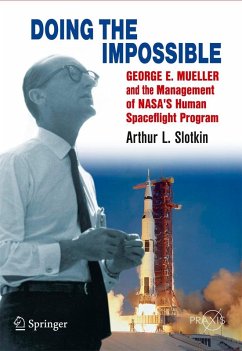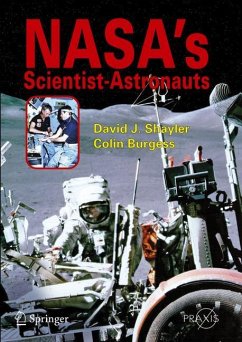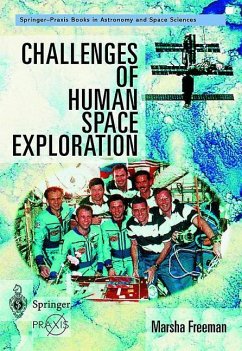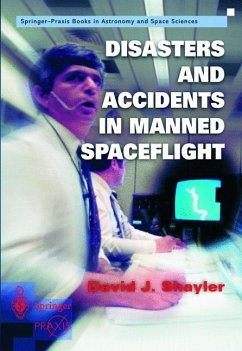
David M. Harland
Broschiertes Buch
The Story of Space Station Mir
Versandkostenfrei!
Versandfertig in 1-2 Wochen
Weitere Ausgaben:

PAYBACK Punkte
18 °P sammeln!





Details how a succession of Salyut space stations led to the development of Mir.
Depicts Mir s assembly piece by piece, in space, between 1982 and 1996.
Describes how Mir became an international research laboratory.
Advises how Mir technology went on to form the core modules of the ISS.
The definitive account of Mir throughout its life through to de-orbiting in March 2001.
Depicts Mir s assembly piece by piece, in space, between 1982 and 1996.
Describes how Mir became an international research laboratory.
Advises how Mir technology went on to form the core modules of the ISS.
The definitive account of Mir throughout its life through to de-orbiting in March 2001.
Dr David M Harland 300 North Woodside Road Kelvinbridge Glasgow, G20 6LT UK Telephone 0141 560 3625 Fax: Email: dave.harland@ntlworld.com ___________________________________________________________________ Tells how the Soviet Union's experience with a succession of Salyut space stations led to the development of Mir, which was assembled in space, piece by piece, between 1982 and 1996 and became an international research laboratory whose technology went on to form the 'core modules' of the International Space Station.
Produktdetails
- Springer Praxis Books in Space Exploration
- Verlag: Springer, Berlin
- 2005
- Seitenzahl: 452
- Erscheinungstermin: 14. Februar 2005
- Englisch
- Abmessung: 242mm x 170mm x 25mm
- Gewicht: 756g
- ISBN-13: 9780387230115
- ISBN-10: 0387230114
- Artikelnr.: 13938828
Herstellerkennzeichnung
Springer-Verlag GmbH
Tiergartenstr. 17
69121 Heidelberg
ProductSafety@springernature.com
From the reviews:
"This book by David Harland is written to his usual high standard. It tells the history of Mir from its early planning stage to its spectacular destruction in 2001. This brings together the complete history of a remarkable spacecraft which made living in space possible. If you want to get a clear picture of how the Mir station started developed and grew and was used, this is the book." (Rex Hall, Spaceflight, Vol. 48, March, 2006)
"The history of the Mir Space Station, initiated with a launch in 1986 and continuously inhabited for a decade, is important for its technological achievements . Harland, a space historian, presents a very detailed survey of the launches, cosmonauts, engineering details, problems, and solutions. The book is well illustrated with photographs of people and spacecraft . a significant addition to the literature of space science and technology. Summing Up: Recommended. Lower-division undergraduates through professionals." (A. M. Strauss, CHOICE, Vol. 42 (11), July, 2005)
"This book by David Harland is written to his usual high standard. It tells the history of Mir from its early planning stage to its spectacular destruction in 2001. This brings together the complete history of a remarkable spacecraft which made living in space possible. If you want to get a clear picture of how the Mir station started developed and grew and was used, this is the book." (Rex Hall, Spaceflight, Vol. 48, March, 2006)
"The history of the Mir Space Station, initiated with a launch in 1986 and continuously inhabited for a decade, is important for its technological achievements . Harland, a space historian, presents a very detailed survey of the launches, cosmonauts, engineering details, problems, and solutions. The book is well illustrated with photographs of people and spacecraft . a significant addition to the literature of space science and technology. Summing Up: Recommended. Lower-division undergraduates through professionals." (A. M. Strauss, CHOICE, Vol. 42 (11), July, 2005)
Für dieses Produkt wurde noch keine Bewertung abgegeben. Wir würden uns sehr freuen, wenn du die erste Bewertung schreibst!
Eine Bewertung schreiben
Eine Bewertung schreiben
Andere Kunden interessierten sich für











